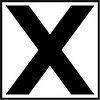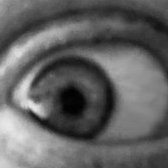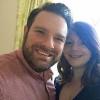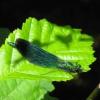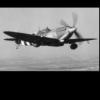Search the Community
Showing results for tags 'bf 109e'.
-
Calling for all Bf 109 exerten in the community to help on a question about the Emil. I am building two braile scale 109Es and I want to leave the cowling panels removable to show the engine bay and machine gun details. I've seen mulitple photos of the MG17s on the Emil where the barrels go through a separate cowling of sorts. Here are some examples, Franz von Werra's famous E-4 and another Luftwaffe 109E(-4?). Franz von Werra E-4 However, I've also seen photos of Emils whose MG17 do not have cowl over the barrels.. So am I somewhat confused and I can't quite figure out how the main cowling panel was installed on top. 🤔 Were these removed only for maintenance? Were they installed only on some subvariants or batches produced by a specific factory? And how do they interact with the main top cowling panel on the Emil, are they sort of inserts, does it cover them partially or completely?
-
For a complete change of pace, I decided to tackle Eduard’s BF 109E instrument panel in ¼ scale. I’m a big fan of Eduard and their precision is certainly Tier One in my book. My goal for this build was to work on my neatness and not rely on ageing to hide my clumsiness. This kit was no different – everything went together really well and the fact that it is ¼ scale meant that I spent much less time squinting through my magnifying headgear than normal! If I have to be critical in a constructive manner, I would suggest to Eduard that the details for attaching the PE handle arms to the plastic handles are poor and a re-think is needed. Eduard’s two PE handle arms have a minute (perhaps a millimeter long) nib that protrudes from the end of the PE. The seemingly solid plastic balls which are the handles have a correspondingly minute hole to receive this nib. You can see these circled joints on the instructions below which I found to be poorly engineered and very weak – no amount of finesse and skill on my part was going to make these joints work, so I needed to come up with another solution. My solution was to cut a trench halfway through the plastic balls, wedge the ends of the PE into the trenches and then “backfill” with CA. This gave the strong joint I needed. Getting the pretty sizable (and thus not insignificant in terms of mass) PE handles to adhere to the slot in the instrument panel was a big ask, given the tiny contact surface. My workaround was to temporarily glue a piece of clothes peg into the slot and next to it to give the handle something to rest against while the CA dried. If that had not worked, I was going to have to either cut through the bottom of the slot through to the back of the instrument panel piece and attach the end of the PE handle from the back with a bigger and stronger joint. As a last resort, I considered re-making the PE handles from styrene sheet, but fortunately didn’t need to. Eduard: something to think about, please. Paints were Tamiya’s XF-63 German Grey and Gunze H12 Flat Black, with other Gunze colours as accents. It was my first time using Mr Color Dark Iron (MC214) and it is amazing stuff when you give it a little polish after the paint dries – incredibly realistic. I made some mistakes and took a few liberties here and there, including omitting colour to some of the instrument bezels – I found lots of reference photos of real instrument panels with plenty of variety in term of colour on some bezels. Some panels looked a little like Christmas trees with bright yellow, blue and red, and others were very stark and monochromatic. I went for the latter. I needed some way to display this, so spent a couple of hours with a sheet of Evergreen 2mm thick styrene sheet and came up with a custom stand, sprayed black from a rattle can. As a final touch and to try and give this one a little personality, I found a period-correct family portrait and re-printed it as a 4" x 5" in ¼ scale, left it in my sweaty pocket for a few hours on a golf course (summer has arrived in the Middle East) and then tacked it to the instrument panel. These aircraft were flown by men from families so I thought it would be believable that one of those men might keep a picture of his family on his “desk” while at work... This is/was a limited run kit, so isn’t that easy to find. If you do come across one, I highly recommend it. Hope you enjoy the photos.
-
Airfix Scale: 1/48 Type: Messerschmitt BF 109E-4/N Trop Extras used: None Paints and colours used: Tamiya paints (please see build thread), Flory Dark Dirt, Flory Sand Pigment, Alcald II Aqua Gloss, Tamiya Matt Ok this is the last one for today! Again, another I finished a little while ago but have only just got around to photographing. This was actually for last years Mediterranean theatre group build, which was great fun, and I did actually finish her just in time but failed to get her photographed... The lovely Airfix BF 109E-4/N Trop. In terms of detail it isn't a patch on the Eduard 109s, but still nicely detailed with reasonably restrained panel lines, reasonably well detailed cockpit, lovely decals and a simple, well fitting construction. The Eduard 109s are better, but at a reasonable price, this is a quick and fun, generally hassle free build. I chose to use Tamiya paints throughout even though they probably aren't quite as accurate colour wise as the Vallejos I have, as I am more confident to get the fine control needed for some areas of the camo patterns. A great fun build, and a recommended little kit. Many thanks, Val
- 12 replies
-
- 24
-

-
Dear Friends Here is the Airfix Bf 109E-4 dressed up with resin wheels, resin cockpit, exhausts and brass gun barrels. The markings are for I/JG52 to whom Ulrich Steinhilper belonged. He wrote a book called 'Spitfire on my tail'. He was shot down in October 1940. His memoirs mirror in many ways his RAF counterparts. The exhaustion of flying up to 4 missions a day and losing about 2/3 of his colleagues in the battle. Hope you like it? Andrew
- 21 replies
-
- 46
-

-
I remember when I first built Academy´s Bf 109E-3 in 1:48, that the tailplane struts were molded too long and the forward bulkhead had to be trimmed quite a lot to allow for a good fit between the fuselage and the wing. Both issues were solved, the first one by cutting the struts in half and the second one doing what I did above. When I bought Hobbycraft´s Ha 1112 "Buchón" with decals for the BoB movie, it also came with too long struts, which had to be cut in half and trimmed. After that, I made the connection between both companies. Some months ago, I was checking kit´s instructions, and I came across Hasegawa´s Bf 109E instructions, and they were the same as the ones that came with the Academy kit, and I assume the same with the Hobbycraft kit. TL.DR, my question is, who copied who? And if Hasegawa got copied, does that mean the Hasegawa Bf 109E tailplanes struts are too long and it´s a factory defect? If its a factory defect, I´ll go and buy the Airfix kit or the Pegasus Hobbies one. I hope you guys can help me with this question.
- 11 replies
-
Hey guys, i would like to show you my last effort, Bf 109E-3 made for the Battle of Britain group build here on BM The Emil was ment to be built as a birthday gift aaand i already gave it away, but first i did made some shots For those interested, the build thread is here http://www.britmodeller.com/forums/index.php?/topic/234986518-bf-109e-3-jg-52-karl-wolff-148-eduard-finished/?p=2063860- though i have been in big time pressure so i was more building then taking shots and making threads :/ I did build the kit mainly from box, just added some details to the cockpit and gear and focused mainly on painting/weathering. Hope you ll enjoy the result (there are few errors,one these is realy big- first, i have lost the nose MG´s, which dropped inside.. )
- 29 replies
-
- 21
-

-
Hey guys, i would like to join this GB if you do not mind At first i thought it ll be the new Airfix Hurricane, but i think it is time to build kits from stash finaly... So it is going to be Bf 109E-3, nicely made by Eduard. The camo ll be the JG52 machine of Karl Wolff with nice white nose, tail and wing tips. The 109 ll be build as a birthday gift as well so i have 3weeks for it to be finished, so i ll add only the most needed details. I m still thinking if i ll open the engine or not - first, it would need some more detailing, as out of box the engine would be somehow poor. And second, i chosed this camo mainly for the white nose, which makes the plane look somehow elegant.. and with the uncovered engine this white detail would be gone.. so i ll see yet.. Anyway, some quick start with the cockpit. Added realy only a bit of wires and two or three boxes and some placards (from PE sheet made for US aircrafts, but you cant read the text on it anyway.. ). I did mainly upgraded the "cage" around the bomb on right side of cockpit, as in the kit it is moulded all together and looks weird - i did split it to two parts, the cage and the valve, then hollowed out the cage and drilled the holes and made some bomb from plastic rod. After that i glued the valve on top of the bomb and added some hoses and plumbing from wires and plastic rods. Then it was only just painting, weathering and i think it is ready to go now
-
I built the Eduard 1:4 BF110C Instrument Panel earlier this year. Here and really enjoyed building it. When Eduard announced they were going to include a 1:4 BF-109 panel in their Royal Edition 1:48 109 kit I have been excitedly awaiting Eduard releasing the panel on its own as I didn't fancy buying the royal edition kit just for the panel. Eduard have just released the panel on its own as a limited release and I ordered one from my local model shop. http://www.eduard.co...-panel-1-4.html The kit is very impressive consisting of Plastic parts decals and pre coloured etched brass. There are some differences between the two kits. The 110 had the instrument bezels and switches moulded in black plastic whereas all the plastic parts in the 109 panel kit are in grey plastic so the parts will have to be painted. The 110 panel could have been assembled without painting should the modeller choose to. The 109 panel utilises decals for the instrument faces as opposed to Vinyl and pre painted etch on the 110 Panel although some pre painted photo etch is included for data plates and instrument needles. I didn't have a problem lining up the self adhesive Vinyl Instrument Faces on my 110 kit and personally prefer these but some modellers may find the decals a bit easier to apply. The added bonus on the 109 kit is the inclusion of a very detailed gunsight which gives the panel a 3 dimensional feel to it. If I go with the same display option as I did with the 110 Panel I will need a deeper frame to display it. Eduard have the start of a nice range with these kits and I hope they continue to add to it in the future. Spitfire Mustang and FW 190 panels would be nice additions even a MiG-21 panel would be nice and would fit in with their current releases.
-
Messerschmitt BF 109E-4 Eduard 1:48 Profipack Edition The BF 109 has inherited quite a legendary status and when you look into its service career, it's certainly obvious why. Viewing the design in retrospect, it looks just like a typical fighter of the WWII era, but it was more than that, it was the very platform that the single seat fighter format was born from. Powerful engine, monocoque airframe, all metal construction, enclosed cockpit and retractable gear this was unheard of before hand, it was radical, not typical in the 1930's. Its birth wasn't perfect however, to achieve its performance, some sacrifices were made, particularly in the landing gear arrangement and high wing loading having a negative effect on landing speeds compared to the competition at the time. This inherent design issue was never fully cured and it's estimated that at least 10% of all 109's were lost in take off accidents. Early models (A-D) were powered by the Junkers jumo engine with outputs of around 700hp. The aircraft was first used in combat during the Spanish Civil War where many lessons were learned and these would be later put to good use in battles over France and Britain. The E or Emil model broke the mould in 109 development by changing to the more powerful Daimler Benz DB 601 engine of around 1080hp, a significant step in performance and also in armament due to the introduction of 20mm cannon. By 1939, all earlier variants had been replaced in frontline service. As the variants progressed, so did the level of armour protection for the pilot. Another critical element to improve survivability was the use of twin radiators with cut off valves meaning that if one radiator was damaged, the other could be used to keep it airborne. The Emil was the primary Luftwaffe fighter until 1941 when the F model became widely available with more powerful engine although a few managed to see combat in the Battle of Britain. For an aircraft that broke the mould with fighter technology and performance in the mid 30's, it's evolution meant that whilst it's design had exhausted improvement capability towards the end of the war, it stayed in operational use until 1965 in Europe in the guise of the Spanish licence built HA 1112 using the Merlin powerplant. During its 30 year career, more than 33,000 were built, a record that will probably never be beaten. The kit If you've come across the E-1 or E-3 kits from Eduard, then you will be familiar with the format here. You'll also know how damn good the kit is ! Packaged in the usual format, the top opening box is packed with goodies in the Profipack version. Two bags of brown plastic sprues (4 sprues in total) are complemented by a fret of clear parts separately wrapped, two photo etch frets and a sheet of canopy paint masks which if you've tried, you probably don't want to build a model again without them ! Even the instructions are beautifully produced in glossy paper using multi-colours. Let's look at the big bits first. The fuselage and wing panel detailing are some of the best available. Panel lines are carefully recessed, there's no over engineering here, pure precision. Not content with panel lines, Eduard have taken the detailing further by adding even finer rivets to the surfaces where appropriate so you won't be needing your rivet tool. You have the option of either having the engine on display or the cowlings closed which we'll come to later. All the control surfaces are moulded separately, so you get the freedom to fix them how you like so you won't be needing your razor saw either ! The fabric control surfaces are beautifully moulded with the taught fabric effect and detailed ribbing. After a good look for flash and sink marks, I couldn't find any worth noting. Construction starts with the cockpit interior and chin radiator. The instructions here are very clear and show using red colouring where plastic parts need to be sanded or removed to make way for etch parts if you choose. The detail in the tub is exquisite, no chunky plastic here, even the injection moulded trim wheels look to scale thickness. Panels, seatbelts and rudder pedals are brought to life with coloured etch additions. Moving onto the engine and nose gun pack, here you'll find the same attention to detail as in the office. The engine is fully replicated with precise plastic parts. Decals are even supplied to provide serial numbers for the engines. The rear bulkhead assembly that includes the nose guns is fitted to the completed engine and the whole lot fitted between the fuselage halves along with the cockpit tub. The exhaust stubs are individually moulded, again the quality goes as far as having the welded seams and cleverly manufactured openings. Be aware that these are intentional seams and not mould flash ! I had to read the instruction a few times to get my head around the options for either having the engine installed or not. Instructions to build the engine are on page 4, however if you choose to have the covers closed, you still need part of the engine building to secure the covers to. Instructions for this option are on page 10, so some flicking through the booklet is required to plan your build. With the fuselage assembled, attention moves to the wings. The radiators are blessed with etched mesh both front and rear. The wheel bay interiors are provided by means of separate parts that fit to the lower wing. With the wings sealed up, the flaps, ailerons and slats can be fitted unless you prefer to leave them off until after painting. Various external detailing delights include etch trim levers, aerials and balance tabs. The wheels are some of the best I've seen in a kit, separate tyres and two part hubs mean they will look pretty special when painted. There's some fine detailing even on the exterior of the aircraft, so care is needed if you want to have them all attached and not lost in the carpet. The clear parts are as good as the rest of the kit. Two windscreen options are provided, one with a hole for a gunsight to fit through. If you choose this option, even more care will be necessary as there are 3 etch parts as well as the sight that fit into the windscreen assuming you want to fit them. Gluing and painting them may produce a few words that the dictionary doesn't include ! More etch and rear armour give the hinged canopy a realistic look, again lots of care needed here, but well worth the patience. When it comes to painting, the instructions have good clear guides for applying the canopy masks. The Decals In keeping with the detail and quality provided on the sprues, the decals are stunning. Printed by Cartograf, the colours are sharp and in perfect register. The squadron emblems are some of the best produced decals I've come across for sharpness and richness of colour. No less than 5 schemes are catered for and a separate sheet of stencils is included. The markings sheet provides a number of different cross styles to cover the range of aircraft and Swastika's are supplied. The options are: 1. W.Nr. 5587, Ofw. Fritz Beeck, 6/JG 51, Wissant France, August 1940 2. W.Nr 5344, Maj Helmut Wick, JG 2, Beaumont France, November 1940 3. Lt. Josef Eberle, 9/JG 54, Netherlands, August 1940 4. W.Nr. 1480, Oblt. Franz von Werra, JG 3, Wierre-au-Bois, France, September 1940 5. W.Nr. 5819, Obstlt. Adolf Galland, JG 26, Audembert France, December 1940 Conclusion This really is a fine kit. The detail is second to none and what you get in the kit is excellent value. Bearing in mind that you get additional etch parts and paint masks as well as 5 decal options to choose from, it would be rude not to have one ! Eduard have produced an icon here, some of the best detail available in a kit yet still reasonably priced around the £20 mark. Some of the detail may challenge novice builders such as the etch and delicate fine parts, but the great thing is that you could omit some of this if you chose and it would still look great. Review sample courtesy of

